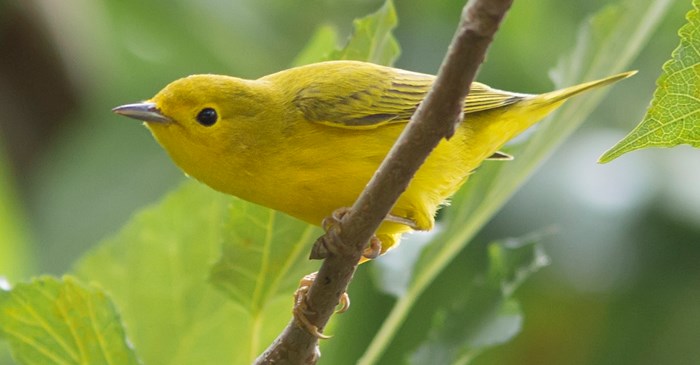This buttery yellow spring bird has a sunny disposition, singing sweetly from willows, wet thickets, and roadsides across almost all of North America.
Yellow Warblers are in the first wave of spring warblers that moves en masse up the North American continent in spring. They’re also among the most conspicuous warblers, somewhat easy to see as they move about frenetically in bushes to glean caterpillars and perch at the tops of shrubs and small trees to sing loud and proud. Both males and females are bright lemon yellow, though males also have reddish, chestnut streaking on their chest. In fact, studies seem to show that a Yellow Warbler’s streaking is a sign of his behavior—the more streaking, the more aggressively a male acts toward other males.
Migration
In spring Yellow Warblers depart their wintering grounds in Central America and northern South America. They typically begin reaching the southern border of the U.S. in March and early April. By May they’re setting up breeding territories in shrubby thickets and woods—particularly along streams, rivers, and wetlands — across the northern two-thirds of the continent.
Song
Yellow Warblers sing vociferously in spring and early summer, and theirs is one of the easier bird songs to learn. The common mnemonic is “Sweet-sweet-sweet-I’m so sweet!” Give it a listen at bit.ly/yellowwarblersong.
Population Status
Locally, Yellow Warbler populations can be negatively affected by the disappearance of their nesting habitat, such as removal of willows along creeks. And their nests are often parasitized by Brown-headed Cowbirds—that is, cowbirds sneak into Yellow Warbler nests and lay their eggs. But across their broad range, Yellow Warblers are one of the most numerous warblers in North America, with an estimated global breeding population of 90 million.
Article content republished with permissions from Cornell Lab of Ornithology, 2017.
